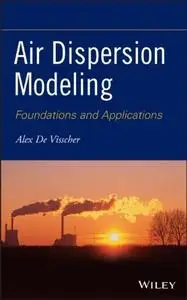Air Dispersion Modeling: Foundations and Applications by Alex De Visscher
English | 2013 | ISBN: 1118078594 | 664 pages | PDF | 14 MB
English | 2013 | ISBN: 1118078594 | 664 pages | PDF | 14 MB
A single reference to all aspects of contemporary air dispersion modeling
The practice of air dispersion modeling has changed dramatically in recent years, in large part due to new EPA regulations. Current with the EPA's 40 CFR Part 51, this book serves as a complete reference to both the science and contemporary practice of air dispersion modeling. Throughout the book, author Alex De Visscher guides readers through complex calculations, equation by equation, helping them understand precisely how air dispersion models work, including such popular models as the EPA's AERMOD and CALPUFF.
Air Dispersion Modeling begins with a primer that enables readers to quickly grasp basic principles by developing their own air dispersion model. Next, the book offers everything readers need to work with air dispersion models and accurately interpret their results, including:
Full chapter dedicated to the meteorological basis of air dispersion
Examples throughout the book illustrating how theory translates into practice
Extensive discussions of Gaussian, Lagrangian, and Eulerian air dispersion modeling
Detailed descriptions of the AERMOD and CALPUFF model formulations
This book also includes access to a website with Microsoft® Excel and MATLAB® files that contain examples of air dispersion model calculations. Readers can work with these examples to perform their own calculations.
With its comprehensive and up-to-date coverage, Air Dispersion Modeling is recommended for environmental engineers and meteorologists who need to perform and evaluate environmental impact assessments. The book's many examples and step-by-step instructions also make it ideal as a textbook for students in the fields of environmental engineering, meteorology, chemical engineering, and environmental sciences.



